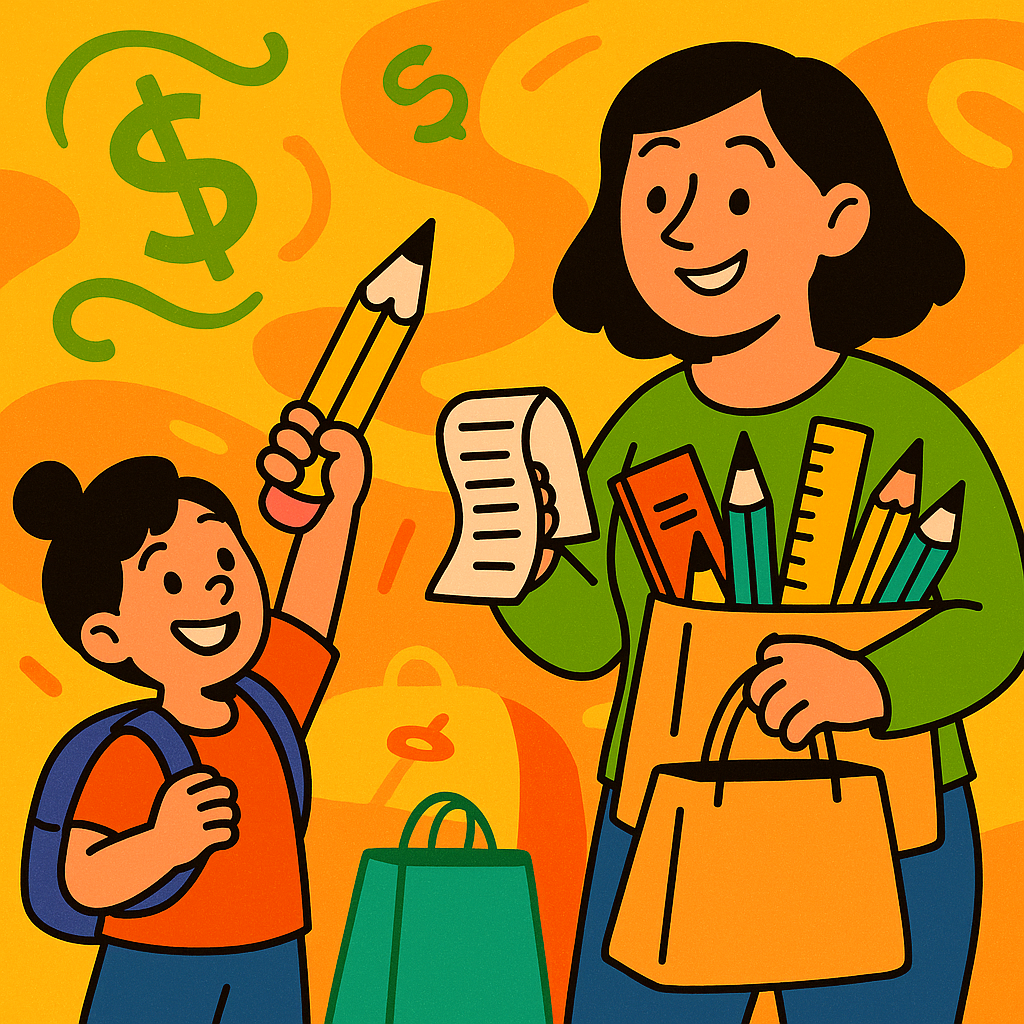If you’ve felt like back‑to‑school shopping is starting to look more like a fashion show than a quick trip for notebooks, you’re not alone. Somewhere between *Stanley* water bottles and branded backpacks, what should be a simple supply run has turned into a runway—and parents are starting to feel the stress. I found myself pacing the aisles, clutching a list that looked longer than my grocery bill and wondering when “drop‑off drip” became a thing. Apparently, it isn’t just my imagination.
A recent Zip Back‑to‑School Spending Survey polled more than 6,000 U.S. parents between mid‑June and early July 2025 and uncovered some surprising (and, let’s be honest, slightly alarming) trends. The average family expects to spend **$466** on back‑to‑school essentials this year, and **60 percent** anticipate spending even more than they did in 2024. It’s not just pencils and lunch boxes driving up the total—**74 percent** of parents feel pressured to buy certain items so their kids “fit in,” and nearly half (48 percent) admit to dressing up for school drop‑off. Over a third of parents (38 percent) are genuinely stressed about affording these items, while two‑thirds believe branded gear makes them fit in. Many are using shopping as self‑care; almost two‑thirds (64 percent) confess to impulse buying, and **71 percent** say that without buy‑now‑pay‑later services they couldn’t complete their shopping. In other words, the pressure is real—and it’s hitting our wallets hard.
When back‑to‑school shopping becomes a status game, it’s easy to feel like we’re failing our kids if we don’t keep up. But the survey shows this frenzy is less about children’s needs and more about parental peer pressure. Dressing up for drop‑off and buying matching water bottles might satisfy a temporary urge to “fit in,” yet it can also teach kids that appearances trump financial prudence. Toss in BNPL payments and impulse buys, and you’ve got a recipe for teaching little ones that debt is normal and delayed gratification is optional. That’s hardly the money lesson we want to pass on.
Here’s a different approach. Before you hit the mall, sit down with your child and create two lists: *needs* (uniforms, notebooks, a sturdy backpack) and *wants* (the gold‑plated pencil case everyone on TikTok is flaunting). Give them a budget and let them prioritise; if the must‑have hoodie pushes the total over the top, suggest earning the difference through extra chores or using part of their allowance. Not only does this build math skills, it teaches them trade‑offs and the value of delayed gratification. If you do use BNPL, treat it like training wheels—explain that it’s still real money and show them how and when you’ll pay it off. Most importantly, model gratitude: remind them that a new notebook is a privilege, not an entitlement.
Back‑to‑school shouldn’t feel like a competition. The latest survey is a wake‑up call that our own anxieties about fitting in are fuelling the spending spree. By pulling kids into the budgeting conversation and focusing on what truly matters—preparing their minds, not their wardrobes—we can turn the annual shopping ritual into a lesson in responsibility. Your child will remember the time you spent together choosing supplies far longer than they’ll remember the brand of water bottle you bought.
ليه مصاريف العودة للمدرسة وصلت لـ466 دولار؟
لو حسيت إن تجهيزات المدرسة بقت أشبه بعرض أزياء، فأنت مش لوحدك. بين زجاجات المياه «الستايل» والشنط اللي عليها شعارات، رحلة شراء الكشاكيل بقت مكلفة ومتوترة. استطلاع حديث من شركة **Zip** شمل أكثر من ستة آلاف أب وأم في الولايات المتحدة وأظهر إن متوسط الإنفاق على لوازم العودة للمدرسة سنة 2025 وصل لـ**466** دولار للأسرة، وإن **60٪** من العائلات متوقعة تصرف أكتر من السنة اللي فاتت. المشكلة مش بس في الأقلام والكراريس – **74٪** من الأهالي بيحسوا بضغوط يشتروا حاجات معينة عشان أولادهم «يبقوا مثل الآخرين»، وحوالي نصفهم بيلبسوا شيك عشان مشهد توصيل الأولاد للمدرسة.
الضغط ده بيخلّي بعض الآباء يشتروا حاجات مش محتاجينها، و**64٪** بيعترفوا إنهم بيشتروا بشكل عشوائي أثناء التسوق. كمان **71٪** قالوا إن من غير خدمة «اشتري الآن وادفع لاحقاً» مش هيقدروا يغطوا المصاريف، يعني حتى طريقة الدفع بقت جزء من المعادلة. كل ده بيخلّينا نسأل: إحنا بنعلم أولادنا إيه عن الفلوس؟
الحل مش في رفض كل حاجة، لكن في الحوار. قبل ما تنزل تشتري، اقعد مع ابنك أو بنتك واكتبوا قايمتين: احتياجات (زي اليونيفورم والكراسات) ورغبات (زي شنطة عليها لوجو مشهور). حدِّد ميزانية وخليهم يختاروا الأولويات؛ لو حاجة «كول» هتزود الميزانية، اقترح إنهم يساهموا بجزء من مصروفهم أو يعملوا شوية مهام إضافية في البيت. لو استخدمت الدفع المؤجل، وضّح لهم إنه مش فلوس ببلاش، وإزاي هتسدده. وأهم حاجة، علّمهم يشكروا على النعم اللي عندهم.
مصادر:
1. تقرير لصحيفة **Business Wire** يوضح أن متوسط إنفاق العائلة الأمريكية على العودة للمدرسة في 2025 يبلغ 466 دولار، وأن 60٪ من الأسر تتوقع إنفاقًا أعلى، مع شعور 74٪ بضغط لشراء منتجات معينة حتى «يندمج» أطفالهم.
2. نفس التقرير يذكر أن نحو 48٪ من الآباء يتأنقون خصيصًا لمشهد توصيل الأطفال للمدرسة، و55٪ يشترون منتجات بعينها ليتماشوا مع الآخرين؛ كما يعترف 64٪ بأنهم يشترون بشكل اندفاعي أثناء التسوق.
3. الدراسة توضح أن خدمات الشراء الآن والدفع لاحقًا أصبحت ضرورية لعدد كبير من الأسر؛ 71٪ قالوا إنهم ما كانوا ليكملوا التسوق بدونها، بينما ذكر 17٪ أنهم كانوا سيستغنون عن بعض الأساسيات لولا هذه الخدمات.







Leave a Reply
You must be logged in to post a comment.